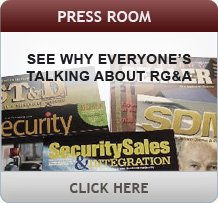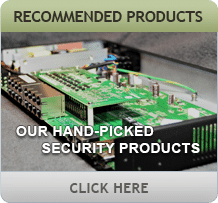Hospital Requests Solutions for System Malfunctions
We are a state psychiatric hospital with forensic patients. [We have ] access control, card readers, surveillance cameras, large and small monitors and viewing screens, a duress system with personal monitor transmitters, state public safety officers, contract security officers, a wide range of communication devices, and appropriate staffing of 400 to 800 with a patient population of 196 (214 capacity). Yet with all the high tech equipment and systems installed, we continue to experience glitches in our operation.
Could you provide alternate options, if there are any, for system failures? We have experienced system failures, which prevent entry or exit into a controlled area. The only current option is activating the fire alarm system to fail safe (unlock) the doors.
Please comment as [the installer] failed to install a back-up system, which is compromising health and safety. It is extremely discouraging for us to experience potential load factors leading to system failures and subsequent shutdowns occurring more often.
Name and location withheld upon request
We have asked Robert Grossman, a consultant who often contributes to Campus Safety, to respond to your inquiry:
It is difficult to respond to the specific nature of the problems the reader is experiencing without an onsite review of the system. However, we can apply some troubleshooting techniques that consulting firms typically use to resolve problems in cases like this.
First, look at the hardware. Verify that the equipment used on this project is appropriate for the application. That is, the card readers, door strikes and other electro-mechanical equipment are designed to withstand the local environment and the amount of usage. Any computers should also be in accordance with published manufacturers’ specifications.
This is relatively easy to verify, although it involves some legwork. Check the data sheets for each product and compare them to the application. If a card reader is not designed to withstand volume usage or high humidity and it is located on the exterior of the employee entrance, there are going to be problems. Likewise, an underpowered server and incorrect type of door strike will also cause issues.
Second, evaluate the software. Make sure the access control system is made by a manufacturer that has a proven track record in this specific environment and that the software is sized to the application. Find the names of other campuses that are using these products in a similar environment. If you call another hospital that is using the same system and it has the same problems, stop right there and call in the lawyers. On the other hand, if the system is working flawlessly at similar locations, make sure the version you have is the right one for you. If the system is designed for 50 users and you are approaching that number, it may be time for an upgrade.
If the software and hardware are appropriate, turn to installation quality. While you can ask an expert to evaluate this for you, often there’s someone on staff (or nearby) who can help. Look at wiring, connections and accessories. Wire should be the correct type as specified by the manufacturer, and connections should be neat and bundled appropriately. Access control panels are often messy inside, and loose wires, peeling electrical tape and lack of cable management all contribute to intermittent failures. Stick-on cable tie blocks become unstuck, and unused cable shielding are also common problems, and if touching or moving a wire harness causes a failure, you’re on the right track.
Also, it’s not enough to just wire everything and hope for the best. Surge protection, battery backup and UPS systems are critical on any application, and are even more important in your specific environment. If these were not a part of your initial system design, they must be added. Your system will fail intermittently without such protection.
Finally, look at software and training. Many strange and unforeseen problems are caused by errors in system setup or maintenance, which speaks to how well your folks are equipped to add, delete and program permissions for users. Access control systems are feature rich, and with this flexibility often comes the opportunity to program in events that are doing what they are designed to do but not what you want them to do.
The good news is that your system should be able to perform reliably over the long term. A careful systematic approach to troubleshooting and resolution of the deficiencies you find should lead to a cure.
Robert D. Grossman
President
R. Grossman and Associates, Inc.



